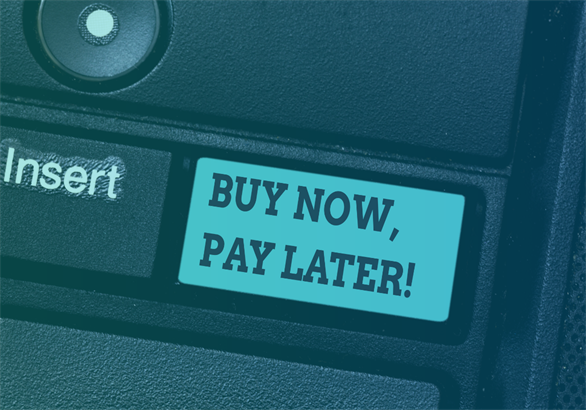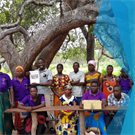Since the start of the pandemic, as online shopping and digital payments have accelerated across the globe, developing countries have seen an uptick in adoption of digital financial services, including peer to peer transfers, digital microcredit, and international remittances. Yet unsecured consumer finance has been limited by a lack of credit scores for emerging market customers, and recent innovations in consumer-focused fintech in the West have not been shared with emerging markets.
In Europe and the US, recent excitement in online consumer finance has focused on “Buy Now, Pay Later” (BNPL) companies like Klarna, Affirm, and Afterpay. BNPL works like a layaway plan in reverse: where layaway programs allowed department store customers to save for a large purchase by paying in installments before receiving the item, BNPL allows the customer to pay only their first installment at the time of purchase, and schedule their remaining installments based on how much they can afford and how often they’d like to pay. The most common BNPL plan is “Pay in 4,” which deducts three installments every two weeks after the purchase date. Larger-ticket items also offer three-month, six-month, and twelve-month payment plans depending on the financing provider and their arrangement with the merchant.
Unlike a credit card, where the customer pays interest on their line of credit and the merchant pays a fee of 1-3% when a credit card is used, in a BNPL model only the merchant pays the fee, which is higher (~6%) than it would be for a credit card payment. Despite the higher fee, merchants are clamoring to enroll with BNPL providers, as they promise both a higher conversion rate and larger average purchase volume for online shoppers when BNPL is offered.
However, no such models have gained traction in emerging markets. With no credit scores widely available for personal customers, banks are loath to lend on an unsecured basis. Microfinance institutions depend on either group guarantees or individual loans with a higher degree of underwriting and oversight. Microfinance loans are typically vetted to ensure that funds are spent on economically productive purposes like business investment, machinery finance, or home improvement. Consumer finance is offered only to salaried employees, and only after a reference check is conducted with their employer.
Emerging market digital credit providers like Branch and Tala have designed algorithms to incorporate a user’s mobile phone activity, mobile money transactions, and prior loan repayments to offer small loan amounts disbursed into a customer’s mobile money account. While these loans are often used for consumer finance, interest is paid only by the customer.
The BNPL model depends on creating a digital, fast, low-cost installment payment experience for the customer, with a corresponding increase in sales, such that merchants agree to pay the lender’s fees on behalf of their customers.
Merchants accustomed to accepting payments in cash will struggle to adapt to digital payments, though credit card companies and mobile money providers have overcome similar adoption hurdles.
Many merchants still prefer cash for over-the-counter transactions. While Visa and Mastercard discourage retailers from charging different prices for cash and credit, in emerging markets there is often a fee of 3-6% charged for over-the-counter credit card purchases. It seems unlikely that merchants wary of new technologies would agree to pay the BNPL fees, and would instead prefer to pass the installment plan fees on to their customer, leading to higher cost items when compared with a cash purchase.
The BNPL pricing model would need to consider social and cultural mores around credit, price discrimination, and capacity to collect from delinquent borrowers.
Without sufficient data inputs for their proprietary algorithms, BNPL companies cannot assess which financing plans to offer to which customers at the time of check-out. Yet big data is increasingly available for emerging market customers, as mobile phone top-up data, online browsing history, mobile money transactions, and banking activity are packaged for incorporation in credit scoring models.
If they can figure out how to package this limited data into a credit decision, BNPL firms have a gilded opportunity to offer installment plans to customers in emerging markets, where the cost of unsecured credit from microfinance institutions and local moneylenders remains high.
Although any development that improves access to credit risks trapping the financially insecure in over-indebtedness, existing formal and informal credit sources are already being used for consumption. Furthermore, the distinction between “productive” and “consumption” loans is easily blurred for large-ticket items like a refrigerator, vehicle, or mobile phone.
Many microfinance borrowers are also familiar with rotating savings and credit groups, where a series of structured deposits yields a large one-time withdrawal, facilitating the savings discipline required for a big-ticket purchase. The simplicity of the BNPL model – receive the item now, pay installments over a few weeks or months - as contrasted with the complicated APRs and interest rates of credit cards, would be very attractive to customers with limited options.
Banks in emerging markets can view the emergence of BNPL financing as either a threat or an opportunity. Progressive bank leaders can partner with specialized fintech providers to share their local currency balance sheet and regulatory license with a platform provider that can offer this new type of finance to consumers in their market.
About the Guest Author:
Jason Loughnane, CFA, has worked in microfinance and banking in the United States, East Africa, and Southeast Asia. He was formerly the Director of Lending Innovation for Yoma Bank, a commercial bank in Myanmar.






